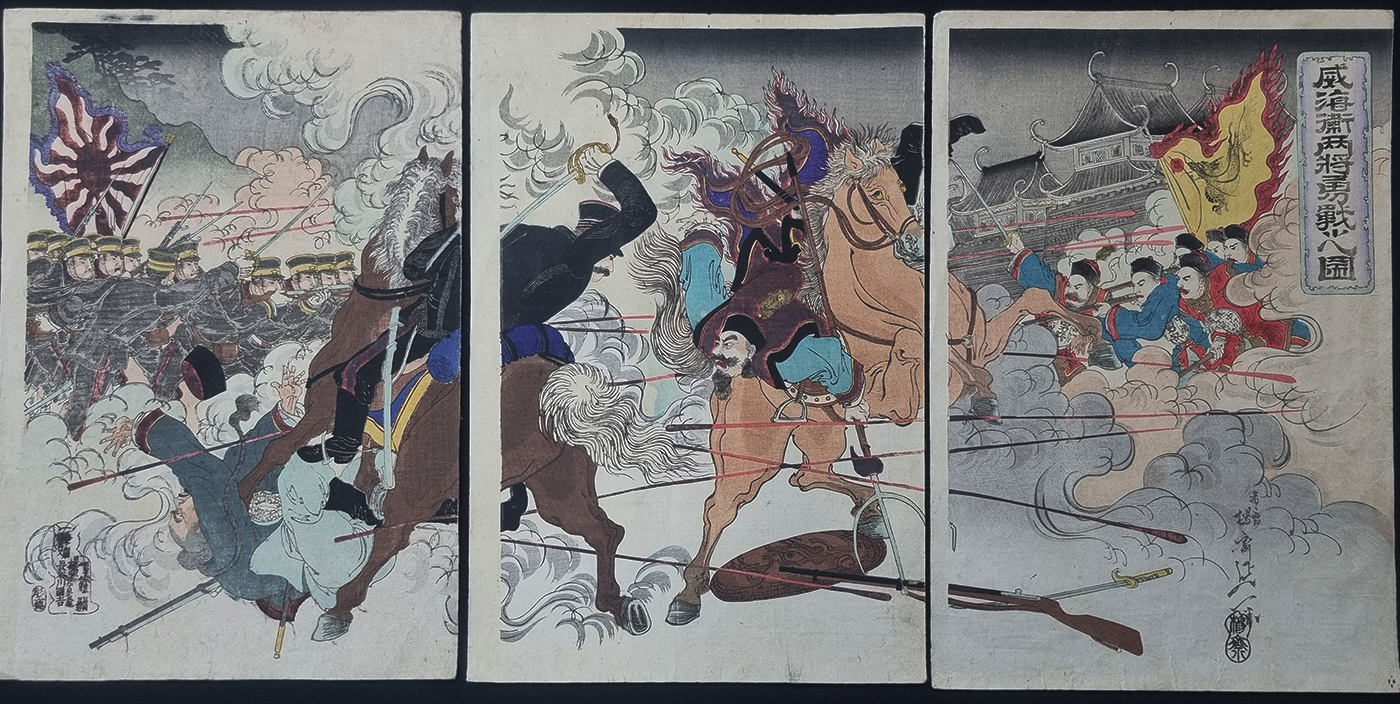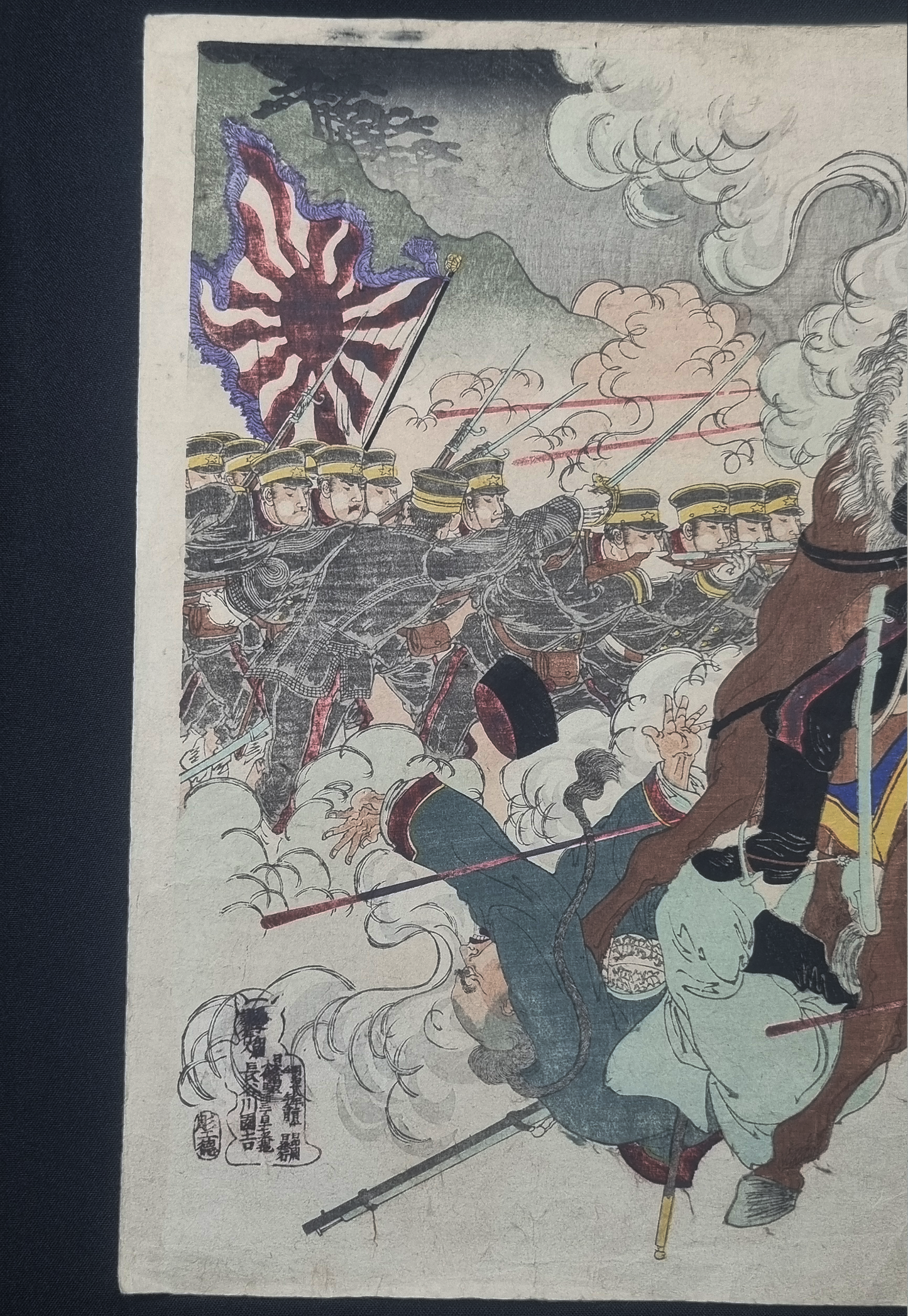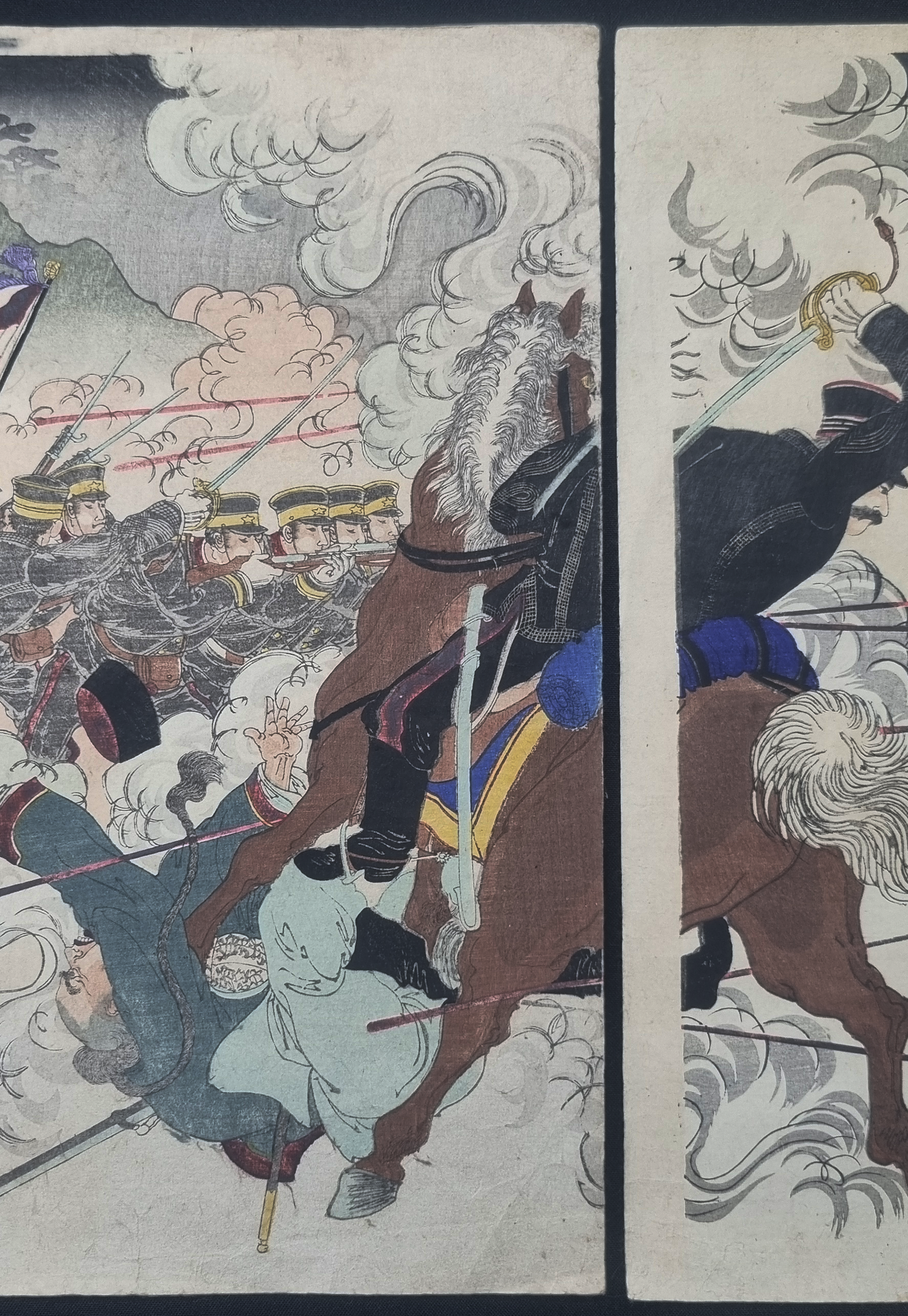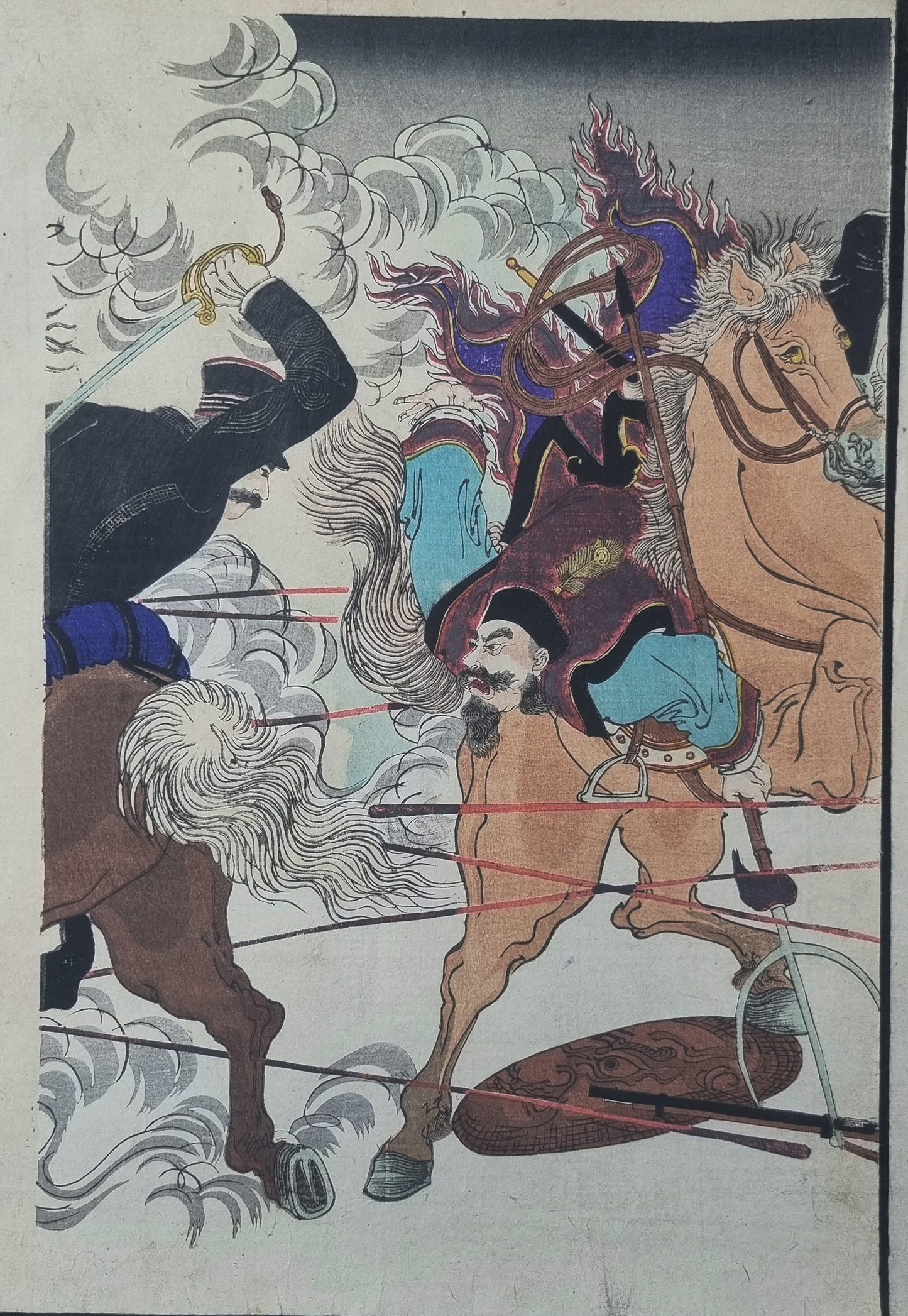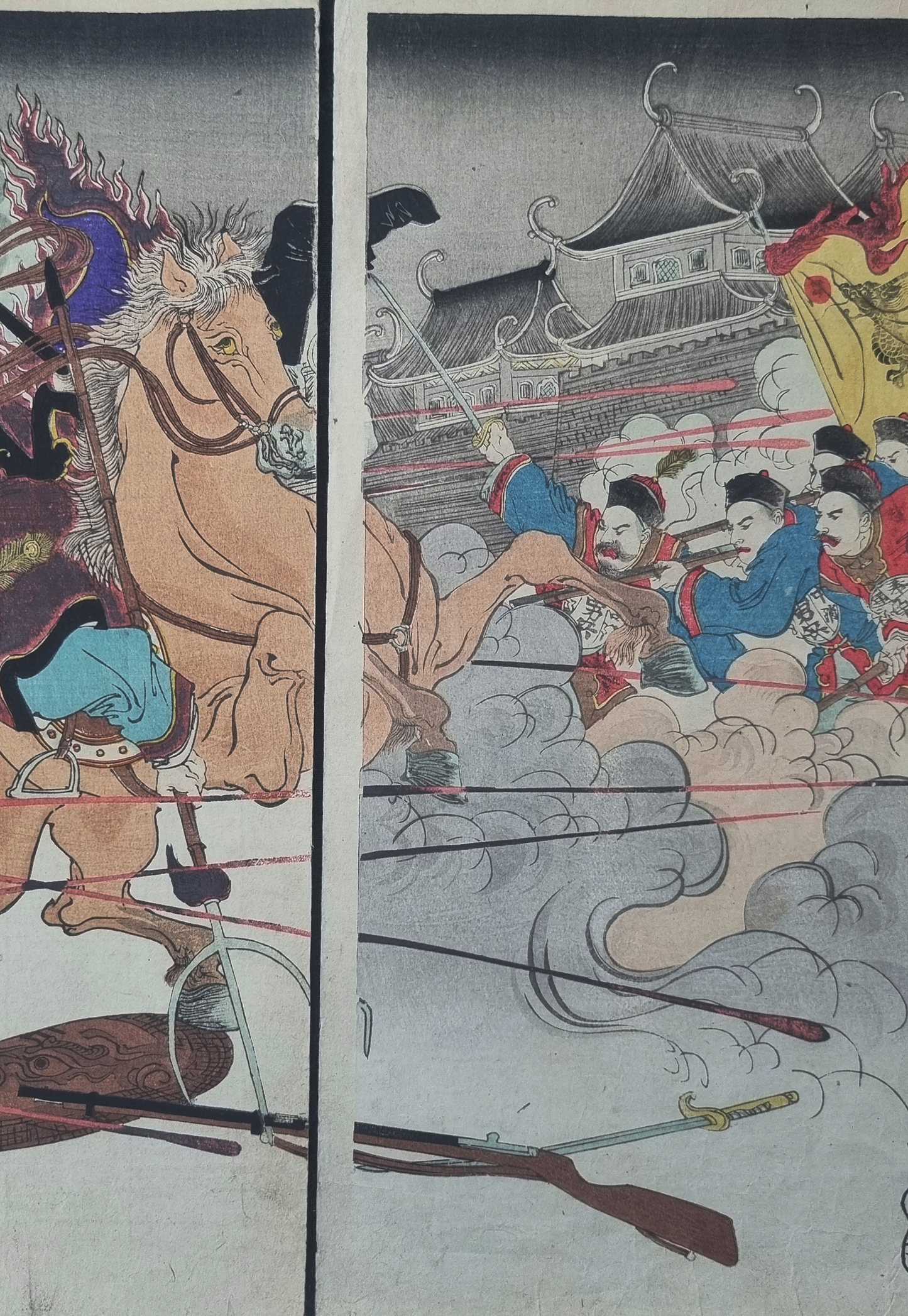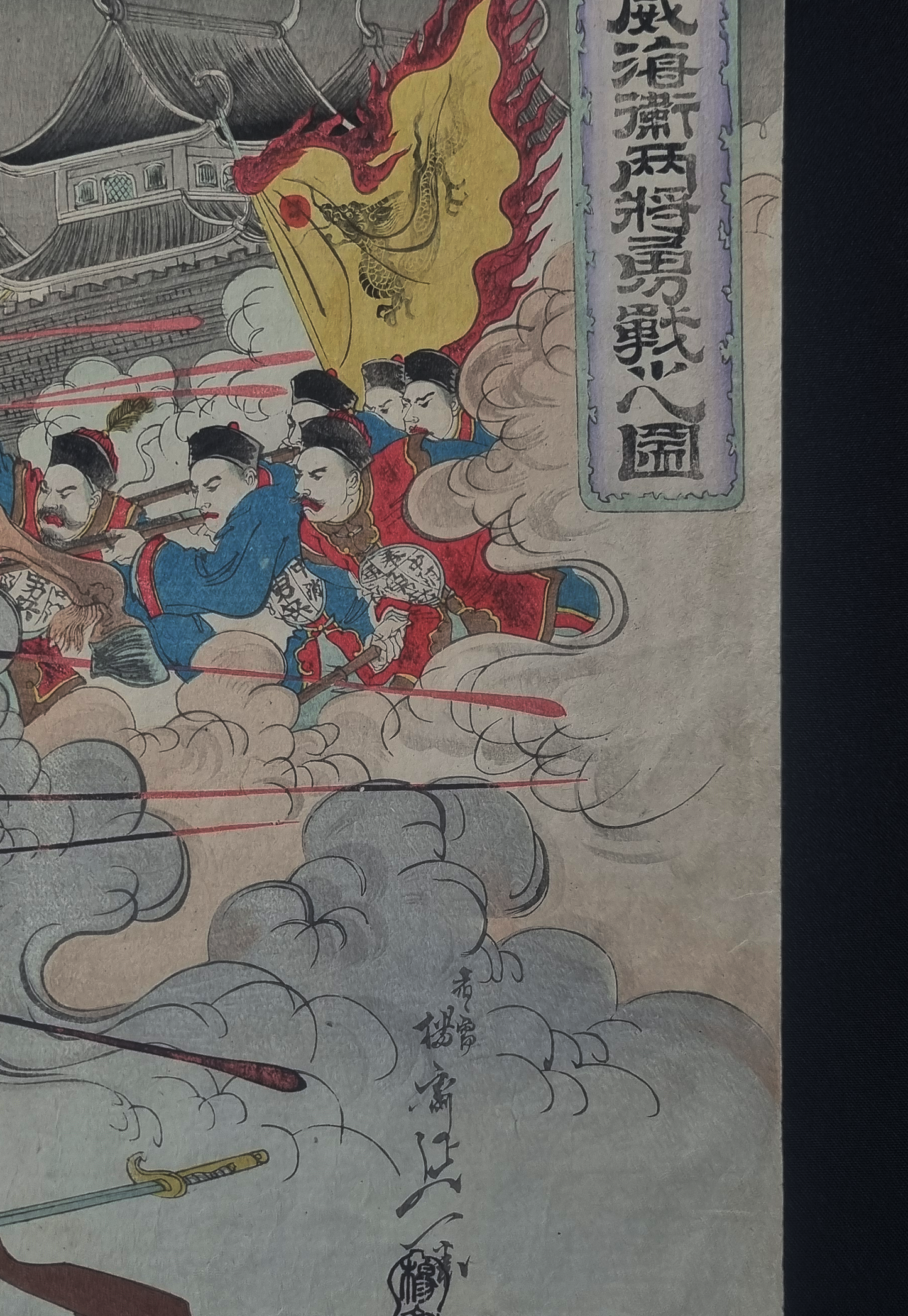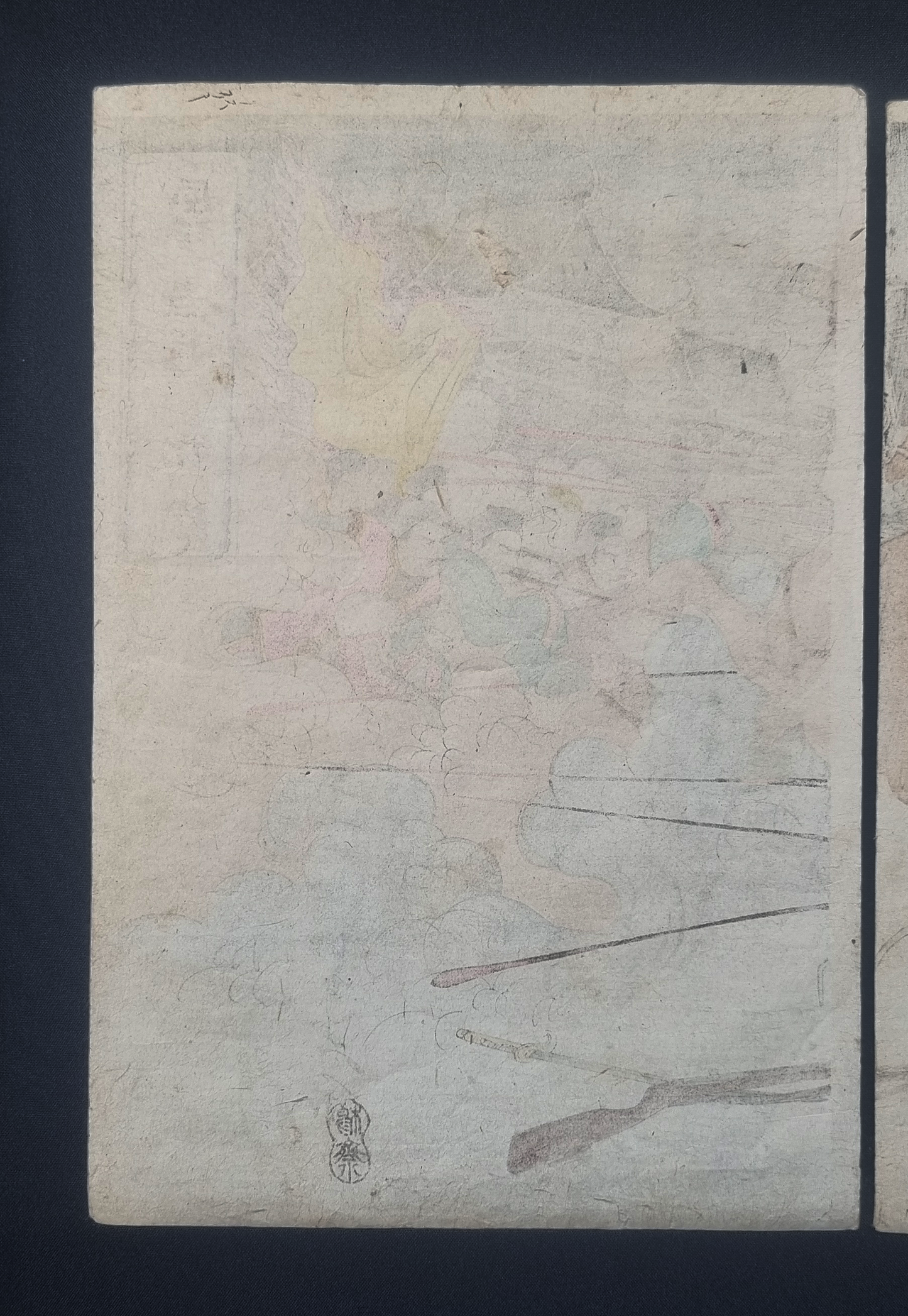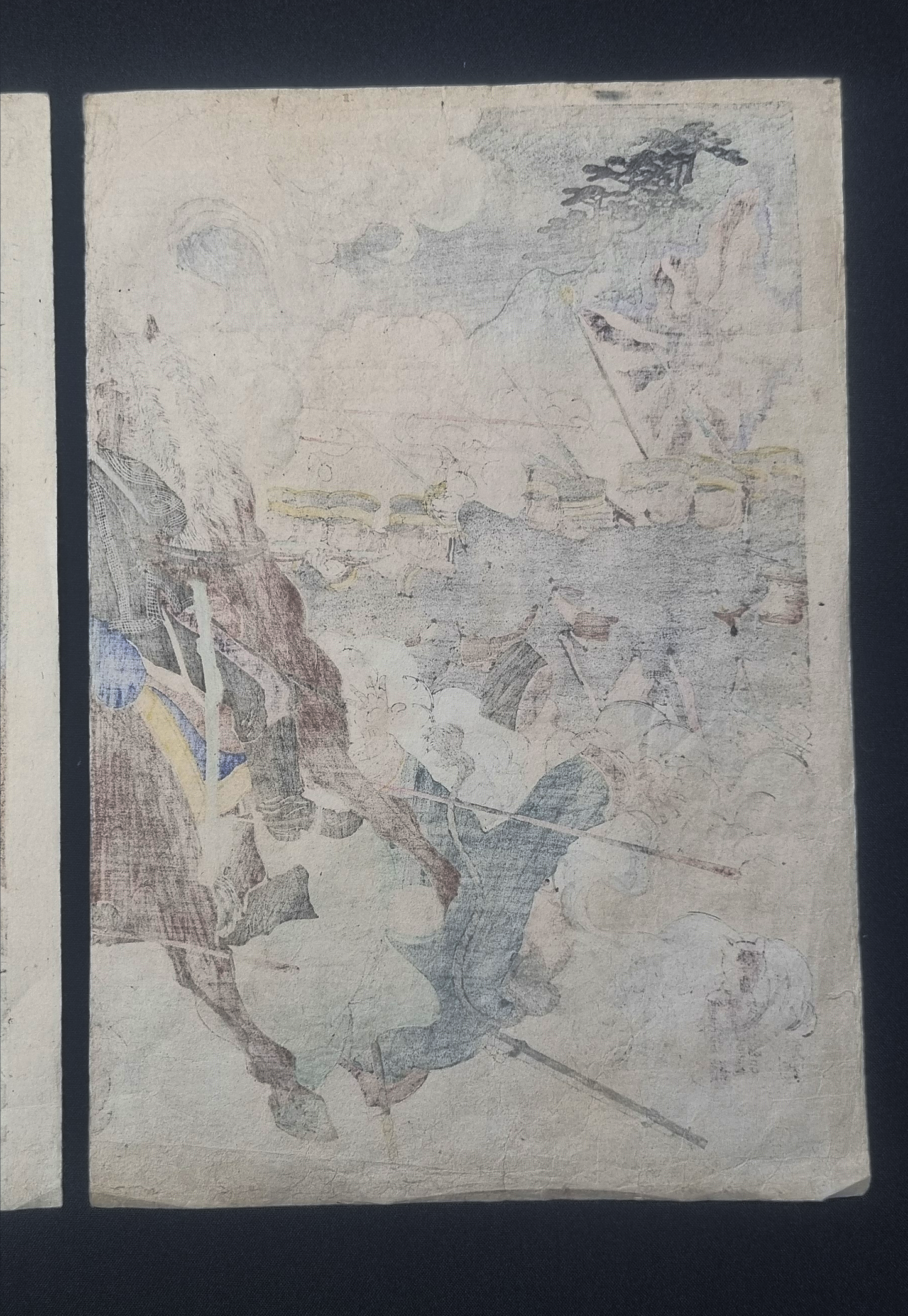Hontō
SENSŌ-E - Scene from the Sino-Japanese War - by Watanabe Nobukazu - 1894
SENSŌ-E - Scene from the Sino-Japanese War - by Watanabe Nobukazu - 1894
Couldn't load pickup availability
Share
Sensō-e, literally “war pictures,” is a particularly dramatic form of Japanese ukiyo-e (woodblock printing) that originated as a style of reportage during the Satsuma Rebellion of 1877 and later became a widespread and popular way to disseminate patriotic imagery during the First Sino-Japanese Wars and the First Russo-Japanese Wars.
Primarily depicted in triptychs, the images served a journalistic function chronicling the course of the fighting, as well as propaganda in support of the wars. The woodblock prints emphasized the courage and success of the military.
Description:
This beautiful original Japanese war print depicts the struggle of two brave Chinese generals attempting to hold their ground during the First Sino-Japanese War of 1894-95.
The title in the cartouche is written in Japanese, but has an interpretation that is no longer used, making it difficult to translate. However, it has been successfully translated, and the phrase in the title, "The Two Generals of Weihaiwei Fought Bravely Against the Eight Nations," refers to the brave struggle of Qing generals Liu Buchan and Ding Ruchang against the Japanese army at the Battle of Weihaiwei during the Sino-Japanese War.
Watanabe Nobukazu
Watanabe Nobukazu (1872–1944) was a Japanese ukiyo-e artist known for his woodblock prints, particularly his war prints (senso-e) depicting the Sino-Japanese and Russo-Japanese Wars.
He was active at the end of the ukiyo-e period, when the art form was declining in popularity due to the rise of photography and lithography.
Watanabe Nobukazu was the most prominent student of Yōshū Chikanobu (1838–1912) and produced a variety of works, including war prints. These detailed triptychs depict land and sea battles, such as those from the Sino-Japanese War (1894–95). He also worked in other genres, such as scenes from the modernization of the Meiji period and depictions of imperial figures.
His works are included in the collections of renowned institutions worldwide, including the Victoria & Albert Museum in London and the Museum of Fine Arts in Boston.
Specifications:
Artist: Watanabe Nobukazu 渡辺 (1872-1944)
Signature: ōju Yōsai Nobukazu hitsu
Publisher: Hasegawa Sonokichi 長谷川其吉
Date: 1894
Title: 威海衛両將勇戰八國 (The Two generals of Weihaiwei fought bravely against the eight nations).
Country of origin: Japan
Era: Meiji period (1868-1912)
Technique: Woodblock print
Dimensions: Connected triptych 72 cm x 37.0 cm. Single sheet approximately 37 cm x 24.5 cm (3x).
Condition: The woodblock prints are in good condition considering their age. Some spots.

